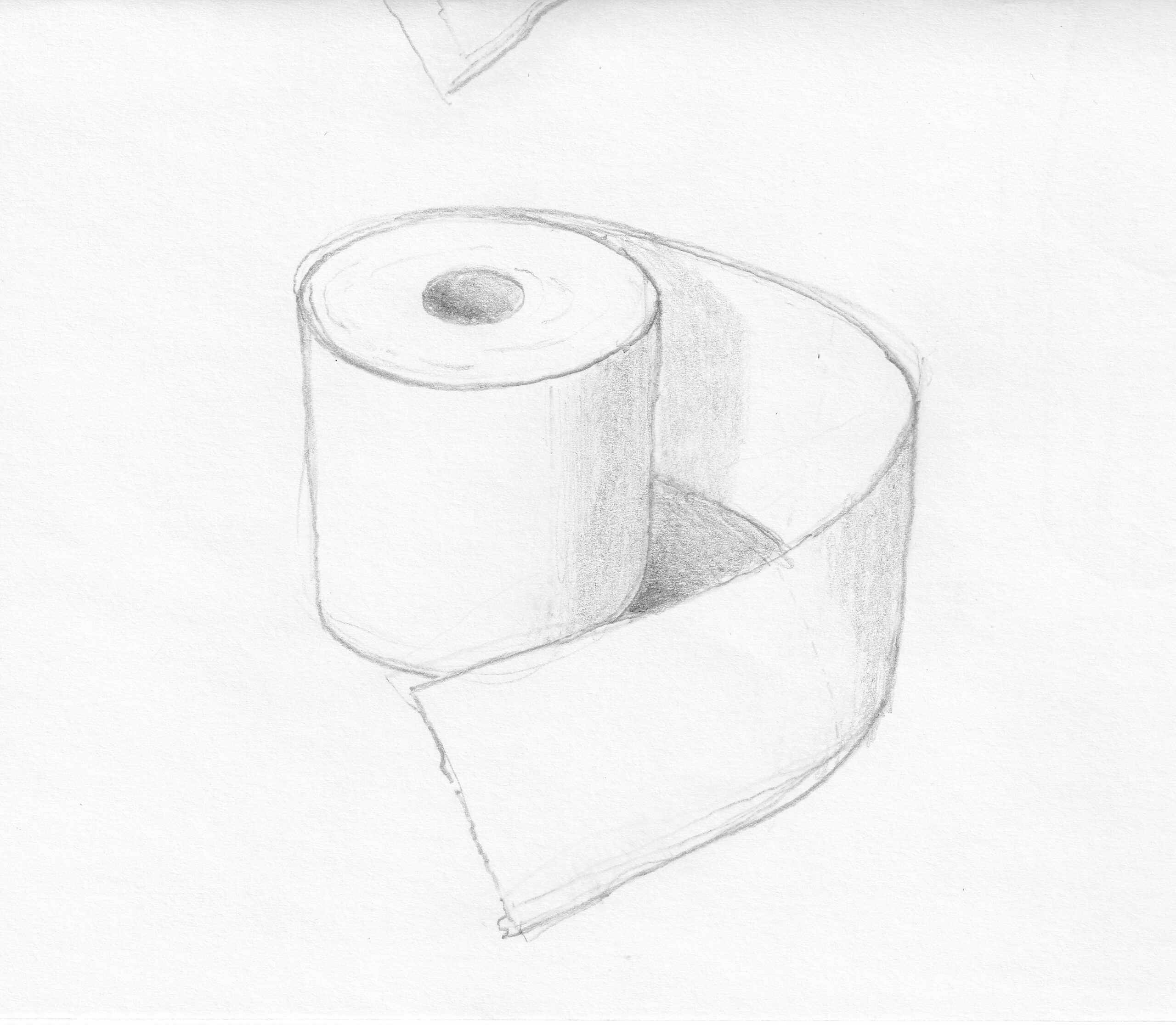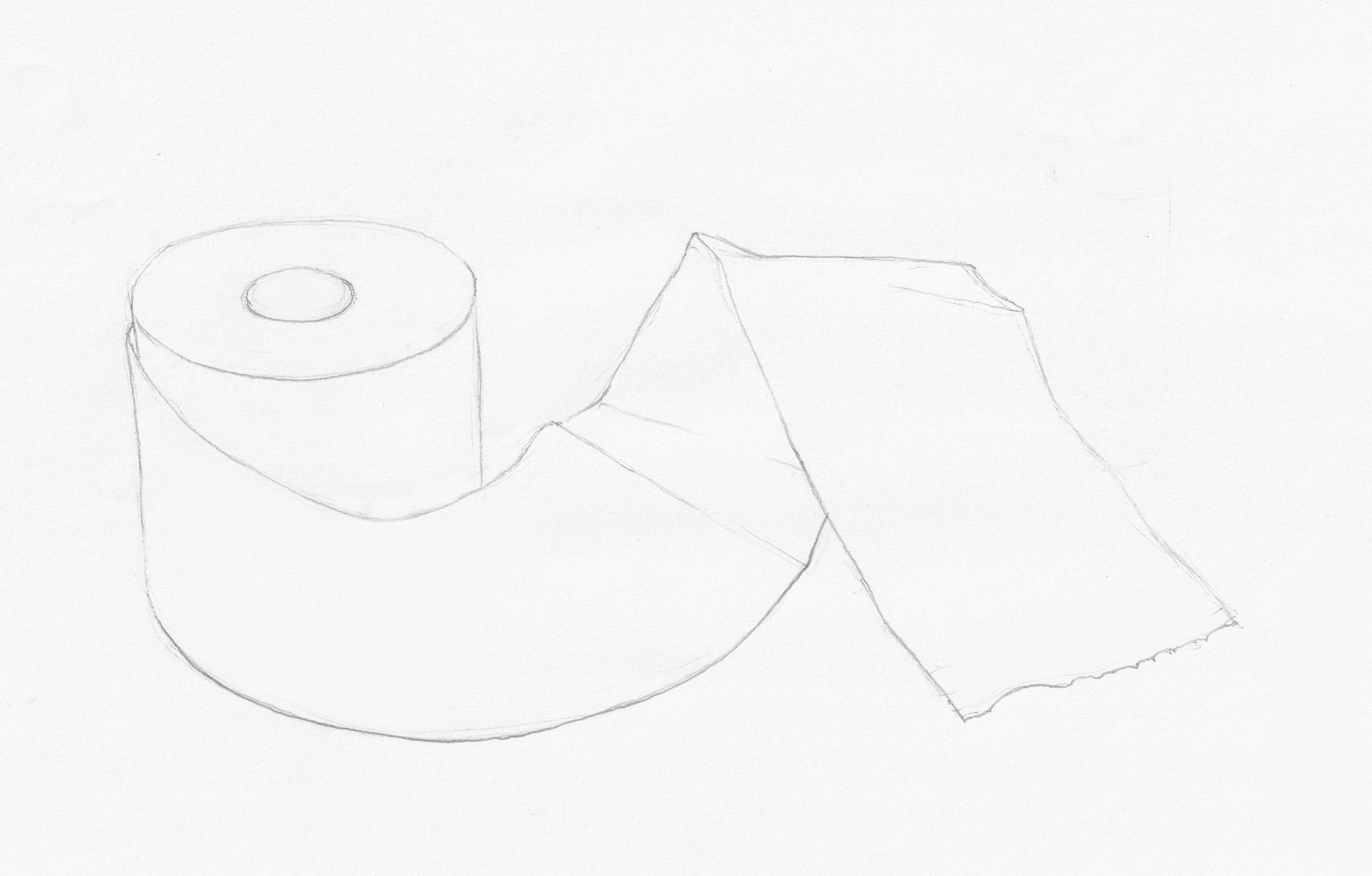Chapter 2 | OBLIQUE OR STRAIGHT?
Suppose you are drawing a part of your environment. You may have difficulty estimating how oblique or straight a line or plane should be drawn. Artists then also use a trick which I will explain in three exercises:
Exercise 1: Hold your arm out in front of you with the pencil exactly along the line you want to trace. Close one eye and look at the position of your pencil (image). The direction of your pencil determines how slanted you should draw the line on your paper, in the example the sloping roof of a building. Check it out with objects in your environment. You don’t have to draw anything, just look
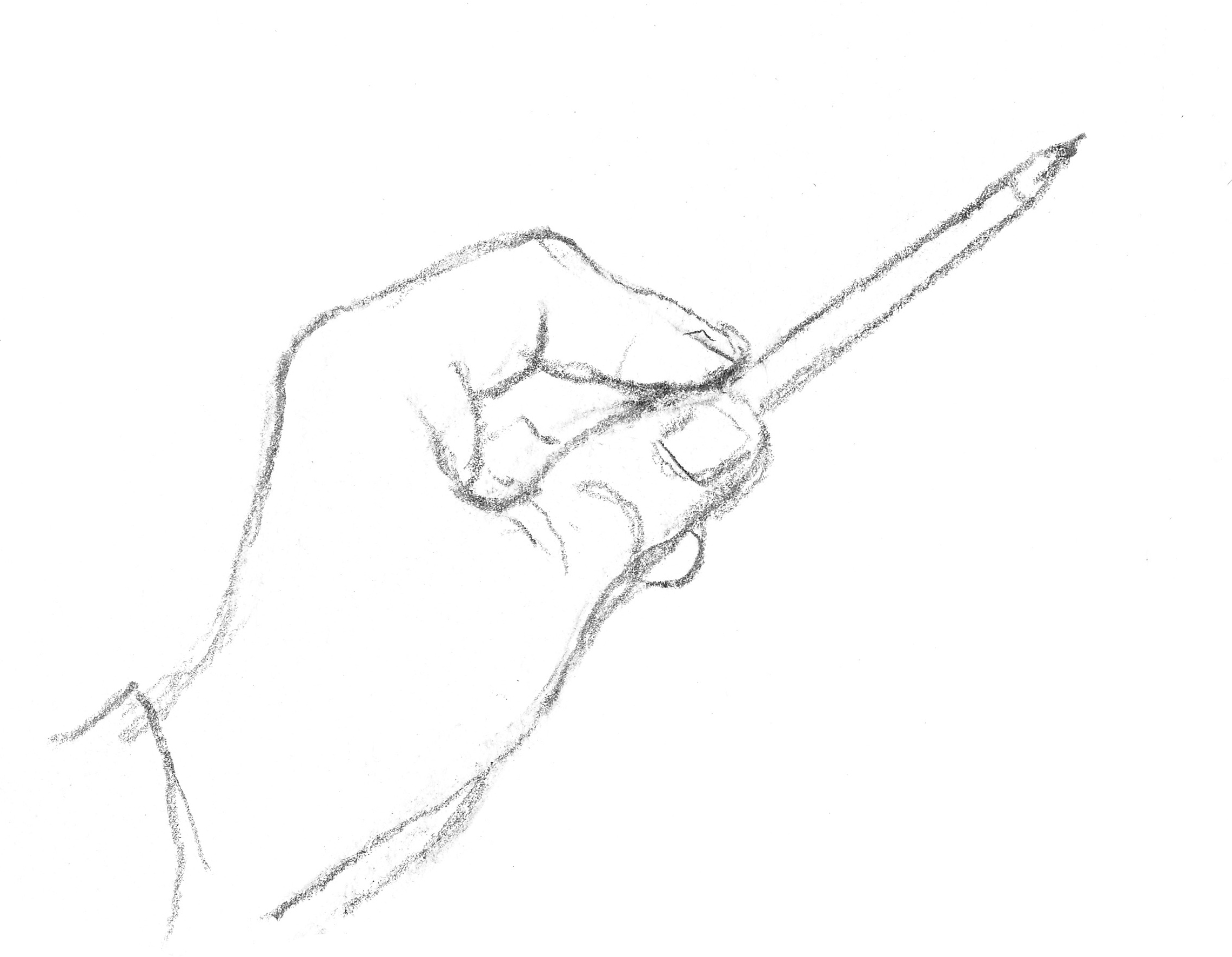
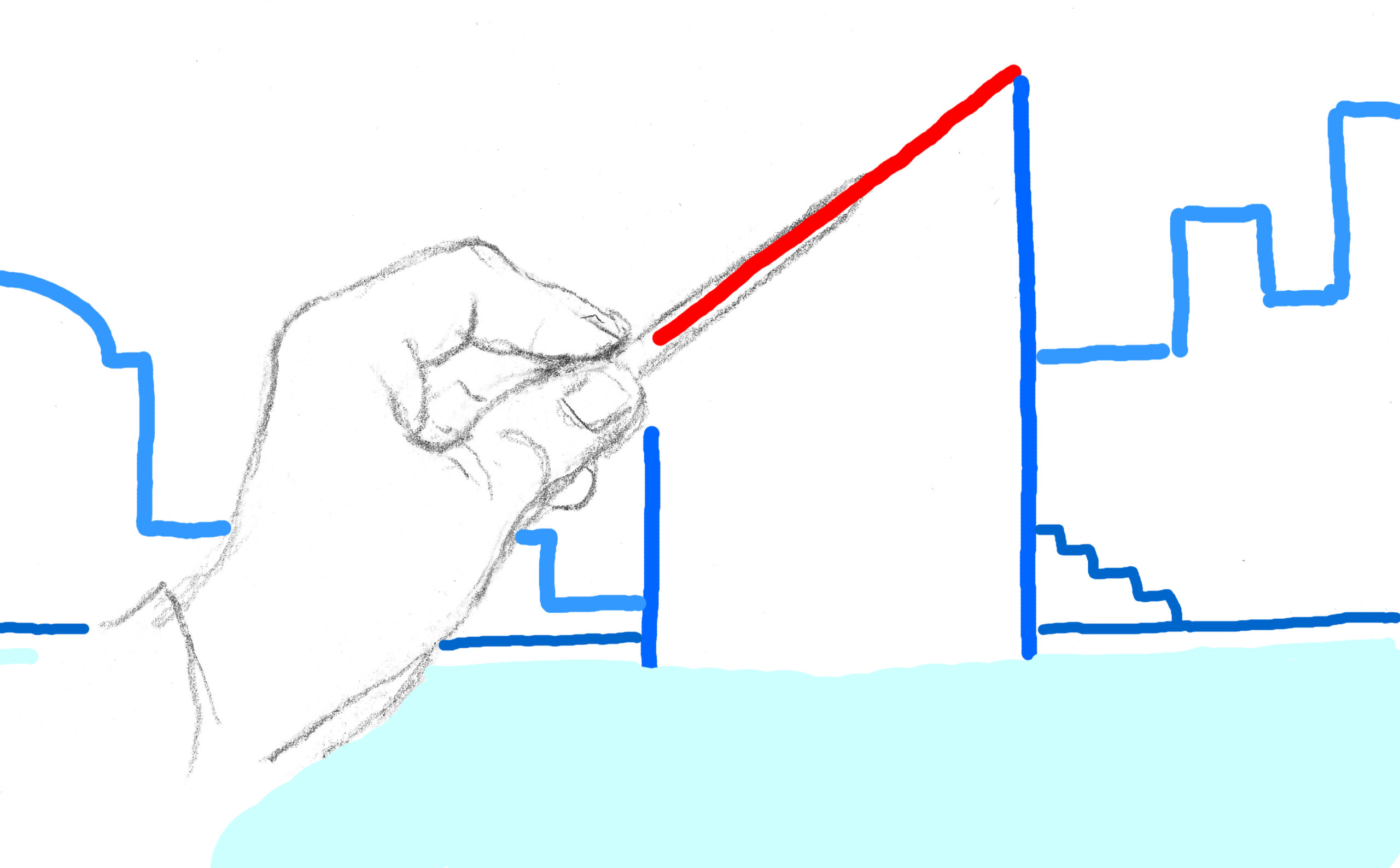
Exercise 2: in the same way you can estimate the position of body parts in relation to each other, such as the head in relation to the feet of someone who’s sitting on the floor. This helps immensely with figure drawing or the position of objects relative to each other. Try it out with people or objects in your environment. You don’t have to draw anything, just look
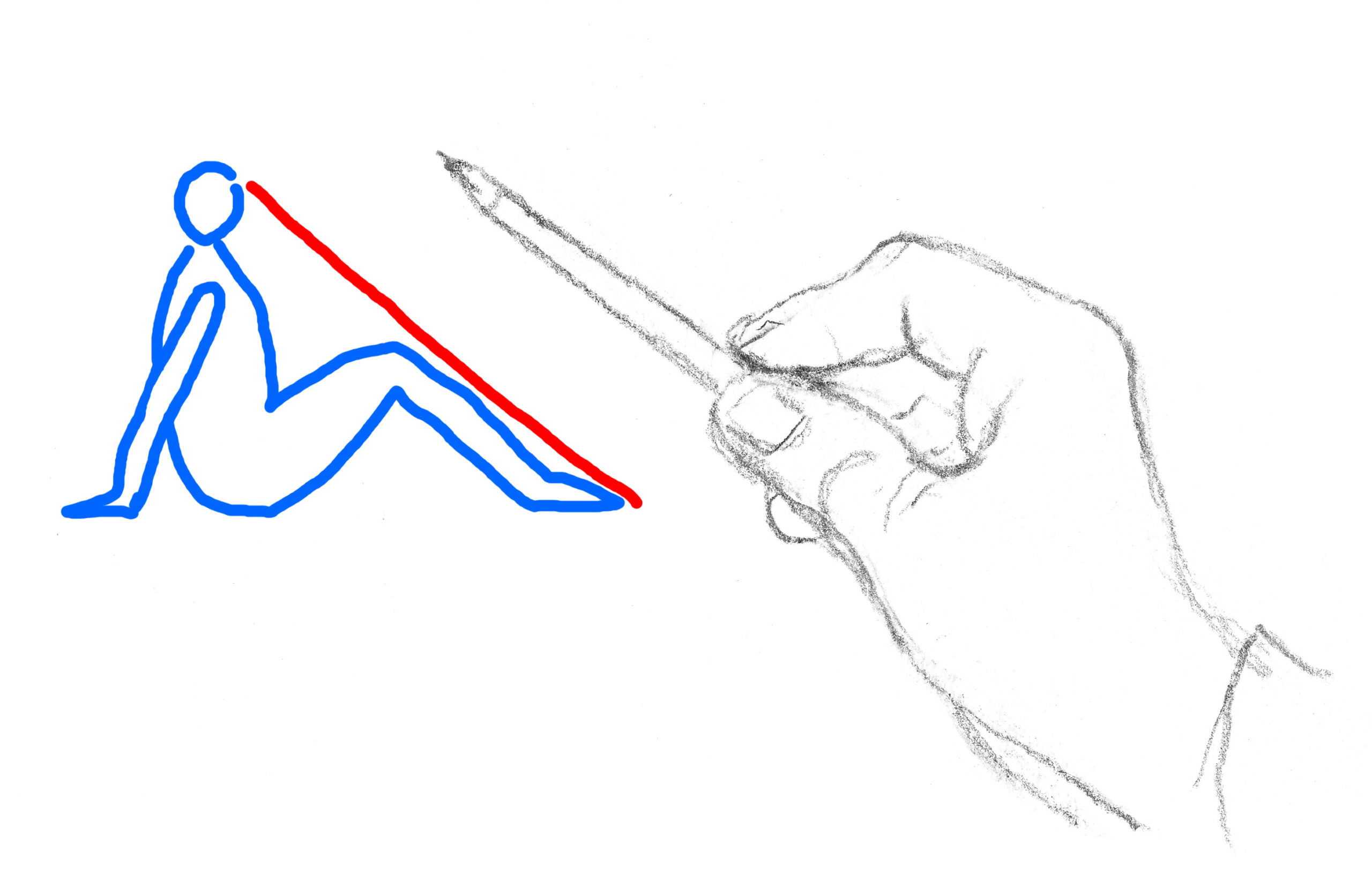
Exercise 3: the trick is above all super useful with (perspective) lines that run away from you in the distance, such as the lines of a street. Make sure your pencil tip is not pointing into the distance. Always hold your pencil parallel to an imaginary sheet of glass between you and the subject. Try it out with perspective lines in your environment. You don’t have to draw anything, just look
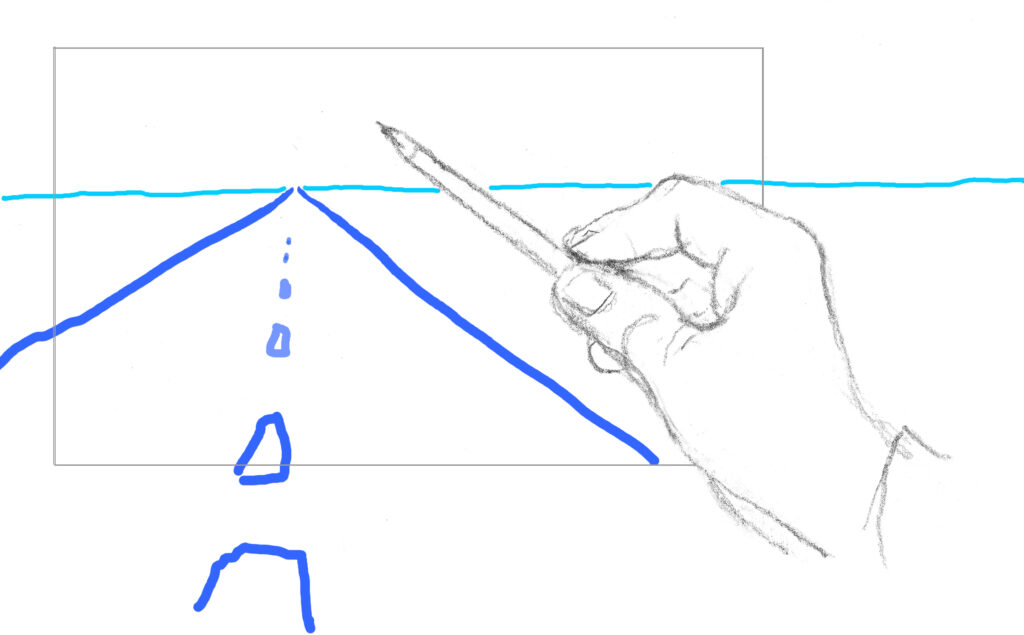
Exercise 4: Place a roll of toilet paper in front of you on the table. Loosely arrange an unrolled strip of paper in any position (see images). Copy this solo still life. Use the trick from this lesson to determine the correct orientation of the loose sheets.
